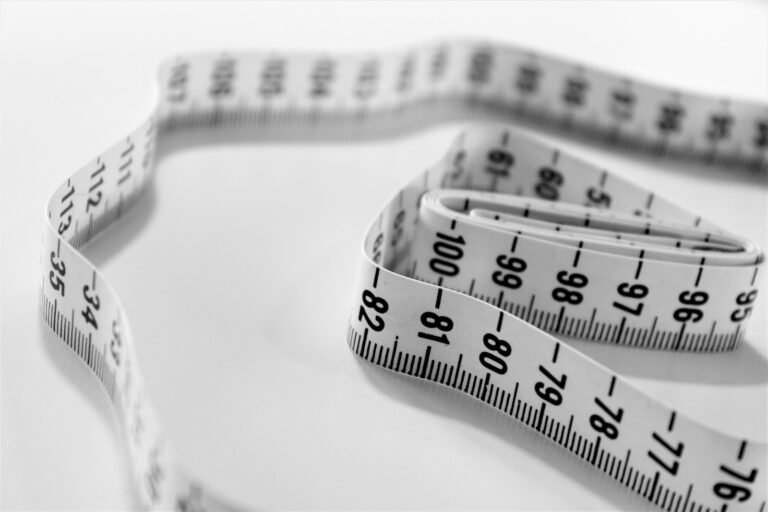Understanding the Glycemic Index and Its Impact on Weight Loss
Are you tired of fad diets that promise quick results but leave you feeling hungry and unsatisfied? If so, it’s time to ditch the gimmicks and focus on a more sustainable approach. That’s where the glycemic index comes in. By understanding how different foods affect your blood sugar levels, you can make smarter choices that lead to long-term weight loss success.
In this blog post, we’ll break down the basics of the glycemic index and explain why it matters for your health goals. Get ready to learn how to eat for optimal energy levels, stable moods, and a slimmer waistline!
What is the Glycemic Index?

The glycemic index (GI) is a measure of how quickly a particular food releases glucose into the bloodstream after it is consumed. Foods with a low GI score generally cause minimal spikes in blood sugar levels, while high-GI foods cause larger and more rapid increases.
Because the GI can impact weight loss, it’s important to understand how it works. When you eat foods with a low GI, your body uses up less energy to break down the food and release its sugar contents into your bloodstream. This means that you burn more calories overall – even if you don’t feel particularly hungry. Conversely, eating foods with a high GI causes your body to use more energy to break down the food and release its sugar contents into your bloodstream. To make matters worse, these large spikes in blood sugar can lead to excessive hunger and cravings later on in the day.
The glycemic load (GL), another important consideration when it comes to dieting, refers specifically to the number of carbohydrates in a given food item divided by its glycemic index rating. Foods with a high GL score are typically high in carbohydrate content and are likely to cause bigger spikes in blood sugar levels than low-GL foods. That said, there isn’t much evidence suggesting that consuming specific amounts of carbs per se is truly effective at promoting weight loss – what matters most is how many total grams of carbohydrate are consumed daily.
How does the Glycemic Index Affect Weight Loss?
The Glycemic Index (GI) is a ranking of carbohydrates based on how quickly they increase blood sugar levels. Foods with a low GI are slowly absorbed and cause minimal spike in blood sugar, while high-GI foods trigger quick spikes in blood sugar and are more likely to cause weight gain. There is some scientific evidence that suggests low-GI foods may help promote weight loss by helping people maintain a healthy body weight.
However, there is also some research suggesting that diets high in GI foods may actually lead to weight gain over time because they can contribute to insulin resistance and increased fat storage. The takeaway message is that the Glycemic Index is not the only factor that affects weight loss, so it’s important to pay attention to other factors as well such as portion size and overall calorie intake.
There is some scientific evidence that suggests low-GI foods may help promote weight loss by helping people maintain a healthy body weight. However, there is also some research suggesting that diets high in GI foods may actually lead to weight gain over time because they can contribute to insulin resistance and increased fat storage.
What to Eat on a Low Glycemic Index Diet
A low glycemic index diet may help you lose weight by helping you maintain a healthy weight and avoiding long term diseases such as diabetes. A glycemic index is a measure of how quickly a food causes your blood sugar to rise. Foods with a high glycemic index are absorbed into your bloodstream quickly, leading to an increase in blood sugar levels. Foods with a low glycemic index take longer to cause an increase in blood sugar levels, which is why they are often considered healthier choices. To find out the glycemic index of a food, check the label or call the company that makes it. Some popular low glycemic foods include:
- Veggies: Asparagus, carrots, cucumbers, eggplant
- Lean proteins: Quinoa, beans and legumes (such as black beans, kidney beans, lentils), chicken breast, fish and shellfish
- Low-fat dairy products: Yogurt and skimmed milk
- Non-starchy vegetables: Broccoli, cauliflower, sweet potatoes , tomatoes
- Fruits: Apples, blueberries, grapes, pear
Recipes
Understanding the Glycemic Index and Its Impact on Weight Loss
The glycemic index (GI) is a measure of how quickly a food causes a rise in blood sugar levels. Foods with a low GI are generally healthy, while those with a high GI can increase your risk of obesity and heart disease. There are two types of GI: The original glycemic index (GI 1) considers how fast the glucose reaches the blood after it’s been eaten. The new glycemic load (GL) takes into account how much of each food contains carbohydrates. Foods that have a low GL score have few carbs, while those that have a high GL score have lots of carbs.
Here are some examples of low and high GI foods:
Apple: Apples have a low GI and are considered to be healthy for you.
Banana: Bananas have a high GI and may increase your risk of obesity and heart disease.
White bread: White bread has a high GL score and is considered to be unhealthy for you because it has lots of carbs. It’s also bad for your waistline because it leads to weight gain over time. If you want to eat bread, try whole-wheat instead or try using slices rather than toast so that you can control the amount of carbs you’re eating.
Butter: Butter has a medium GL score and is considered to be okay for you if you’re trying to maintain your weight since it has very few carbs.
Cereal: Cereal has a high GL score and is considered to be unhealthy for you because it has lots of carbs. It’s also bad for your waistline because it leads to weight gain over time. If you want to eat cereal, try whole-grain instead or try using small amounts of sugar-free cereals so that you can limit your carbs.
Sugar-free cereal: Sugar-free cereals have a low GL score and are considered to be healthier for you because they have few carbs. They’re also good for your waistline because they don’t lead to weight gain over time.
Alternative Ways to Follow a Low Glycemic Index Diet
There are a variety of alternative ways to follow a low glycemic index diet. For example, you can consume black beans as your main source of carbohydrate, eat a wide variety of fruits and vegetables, or opt for unsalted nuts and seeds as your main sources of protein. Additionally, you can create your own low-glycemic index diet by adjusting the ingredients in your recipes.
Another way to follow a low glycemic index diet is to monitor your blood sugar levels regularly. This will help you stay on track and make sure that you’re eating foods that won’t cause spikes in your blood sugar levels. In addition, tracking your net calories (the number of calories minus total fat grams) will help you ensure that you’re basing your intake on healthy foods rather than processed ones.
Conclusion
It can be really hard to get our heads around the glycemic index (GI). But once we do, we can see that it has a big impact on our weight loss efforts. The GI is a measure of how quickly carbohydrate-based foods produce a rise in blood glucose levels. Foods with a high GI are often classified as “highglycemic” and tend to spike blood sugar levels quickly and significantly. This means that they are typically not ideal choices for people looking to lose weight or manage their diabetes. However, understanding the role the GI plays in weight loss is an important first step towards making better food choices that will help us achieve our goals.







One Comment